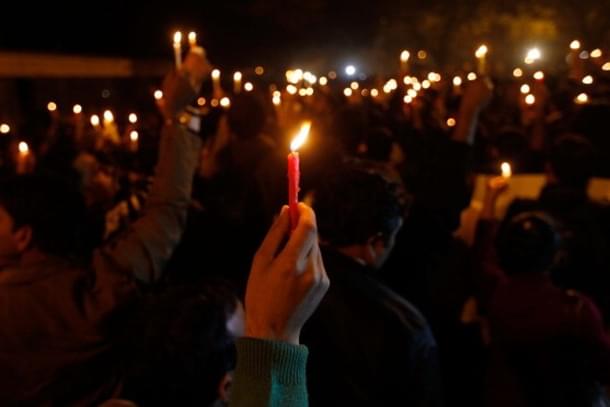Society
Delhi Reported Maximum Crime Rate Against Women, Jaipur Tops Among Metro Cities: NCRB Data
Nishtha Anushree
Dec 04, 2023, 06:36 PM | Updated Dec 14, 2023, 05:32 PM IST
Save & read from anywhere!
Bookmark stories for easy access on any device or the Swarajya app.


In 2022, Delhi reported the highest rate of First Information Reports (FIRs) related to crimes against women in India, according to data from the National Crime Records Bureau (NCRB).
The national capital documented 14,247 cases, equating to a rate of 144.4 per lakh, significantly exceeding the national average of 66.4. The data also showed a rise from the previous years, with 10,093 and 14,277 cases reported in 2020 and 2021, respectively.
Among metro cities, Rajasthan's capital Jaipur topped the chart with a crime rate of 239.3, surpassing even Delhi city with a crime rate of 186.9. The crime rate average of metro cities is 90.1.
Notably, crime against women had become an issue in the recently held elections in Rajasthan, where BJP managed to snatch power from Congress by attacking Ashok Gehlot-led government over the issue.
Coming back to the states, Uttar Pradesh recorded 65,743 cases, Maharashtra 45,331, Rajasthan 45,058, West Bengal 34,738, and Madhya Pradesh 32,765. These five states collectively contributed to 50 percent of the total cases registered across the country.
However, crime rate in Uttar Pradesh is significantly lower at 58.6. A crime rate exceeding the national average was recorded in 12 states and union territories.
These include Delhi, Haryana with a crime rate of 118.7, Telangana with 117, Rajasthan at 115.1, Odisha registering 103, Andhra Pradesh at 96.2, Andaman and Nicobar Islands with 93.7, Kerala at 82, Assam with 81, Madhya Pradesh recording 78.8, Uttarakhand with 77, Maharashtra at 75.1, and West Bengal registering 71.8.
In 2022, India recorded 4,45,256 instances of crimes against women, equivalent to 51 FIRs being filed every hour.
According to PTI, the most prevalent crimes against women under the Indian Penal Code were cruelty by a husband or his relatives, accounting for 31.4 per cent of the total. This was followed by the kidnapping and abduction of women at 19.2 per cent, assault on women with the intent to violate her dignity at 18.7 per cent, and rape, which constituted 7.1 per cent of the crimes.
The rise in the number of First Information Reports (FIRs) doesn't necessarily indicate a surge in criminal activities. Instead, it suggests that a greater number of individuals are stepping forward to report crimes.
The rise in crime rates reflected in state police data could actually be due to certain public-focused police initiatives, such as the introduction of e-FIR facilities or women's helpdesks, according to the NCRB.
Regardless of whether crime rates increase or decrease, it necessitates a professional examination of the underlying factors related to local communities in order to appropriately tackle the relevant issues.
Nishtha Anushree is Senior Sub-editor at Swarajya. She tweets at @nishthaanushree.





